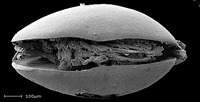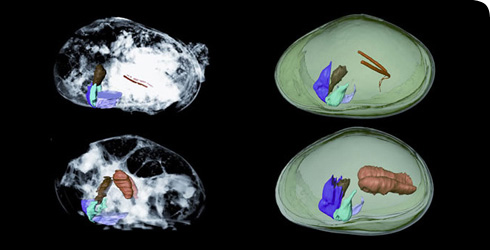X-rays reveal prehistoric sex-life of ostracods
X-ray scans of tiny shrimp-like animals called ostracods reveal similarities in the internal sex organs of prehistoric and modern ostracods, meaning this way of reproducing has probably existed for at least 100 million years. This makes it the oldest evidence for reproduction with giant sperm, sex cells that can be many times longer than the male animal.

The Synchrotron, in France, uses radiation to produce a series of X-ray scans that are combined to make a highly detailed 3D model. © A Petricola/ European Synchrotron Radiation Facility
Scientists have been able to uncover the internal anatomy of the microscopic ostracods using revolutionary technology at the European Synchrotron Radiation Facility in France. The facility uses intense and highly focused X-rays to investigate specimens and make 3D images of them.
The ostracod fossils used in the study were from the Museum’s specimen collections. The ancient species is called Harbinia micropapillosa and the fossils were so well preserved that remains of soft body tissue were intact.
Ostracods
Ostracods are tiny animals not much bigger than a full-stop that can be found in all aquatic environments and very occasionally some damp terrestrial ones. They are crustaceans, like shrimp and prawns, and have calcified shells.

Electron micrograph of ostracod, Harbinia micropapillosa, shows soft body parts inside the calcified case.
Although microscopic, they are so common that their total mass makes them a vital part of the marine food chain, being an important food source for other creatures. There are over 50,000 named ostracod species worldwide.
Giant sperm
Modern-day ostracods have 2 penises and some have sperm that are up to 10 times their body length. And, it’s not just ostracods that have giant sperm, some species of frogs, moths, beetles and flies do too.
The reason for having such large sperm is still a bit of a mystery to scientists. A lot of the animal’s energy goes into producing them but it is obviously a successful reproduction strategy as it has lasted for millions of years.
Toolbox
Art, nature and imaging

Discover how natural history art and imaging techniques have developed since the 17th century and explore selected artworks from the Museum’s world-class art collections.
